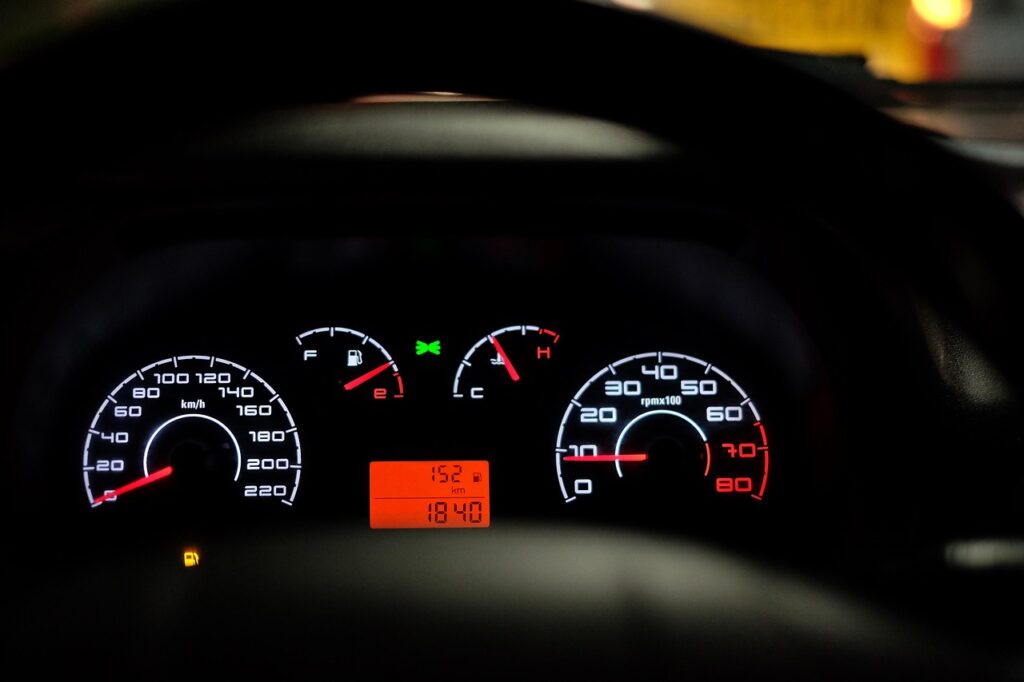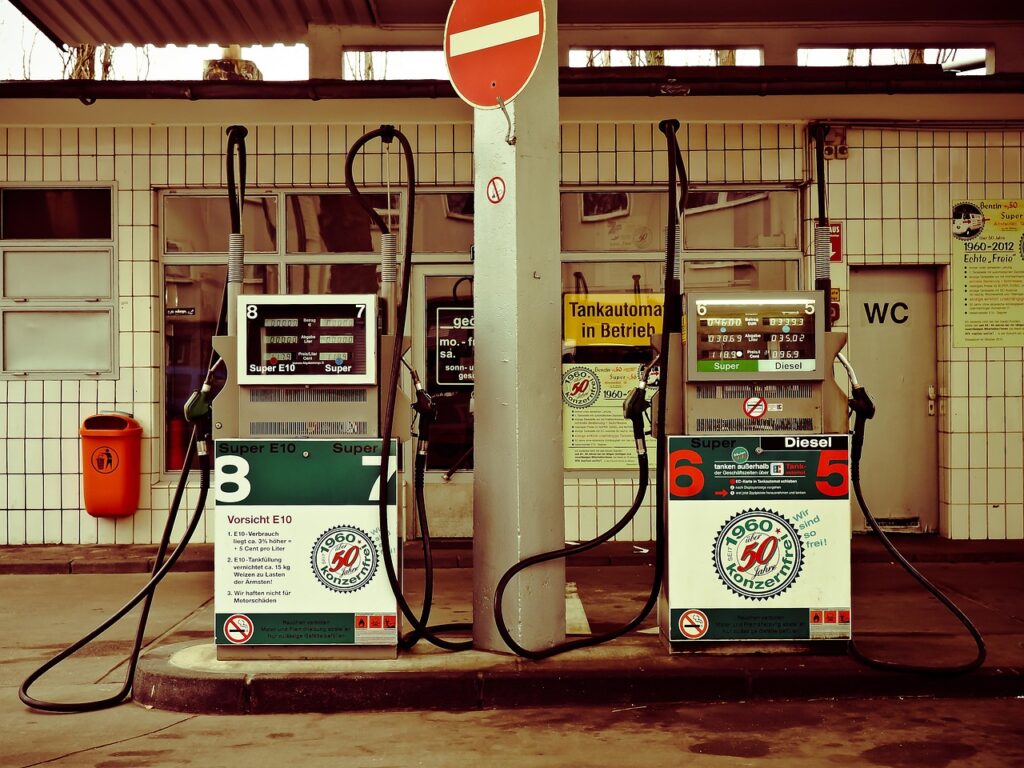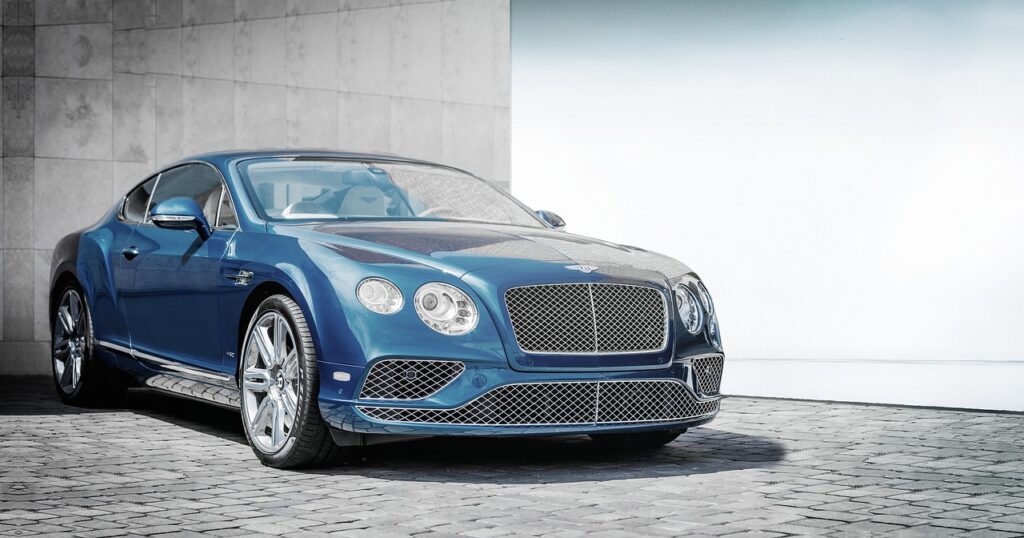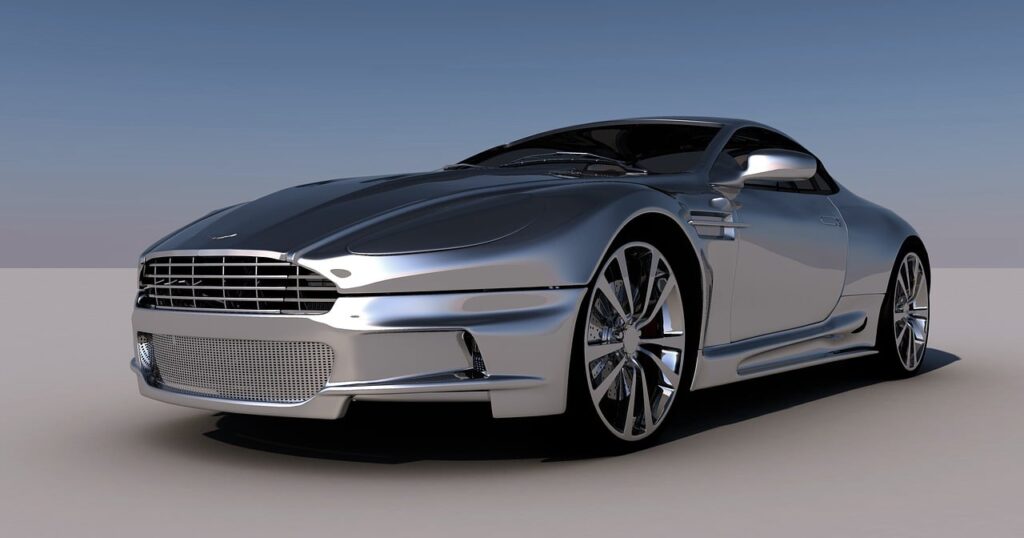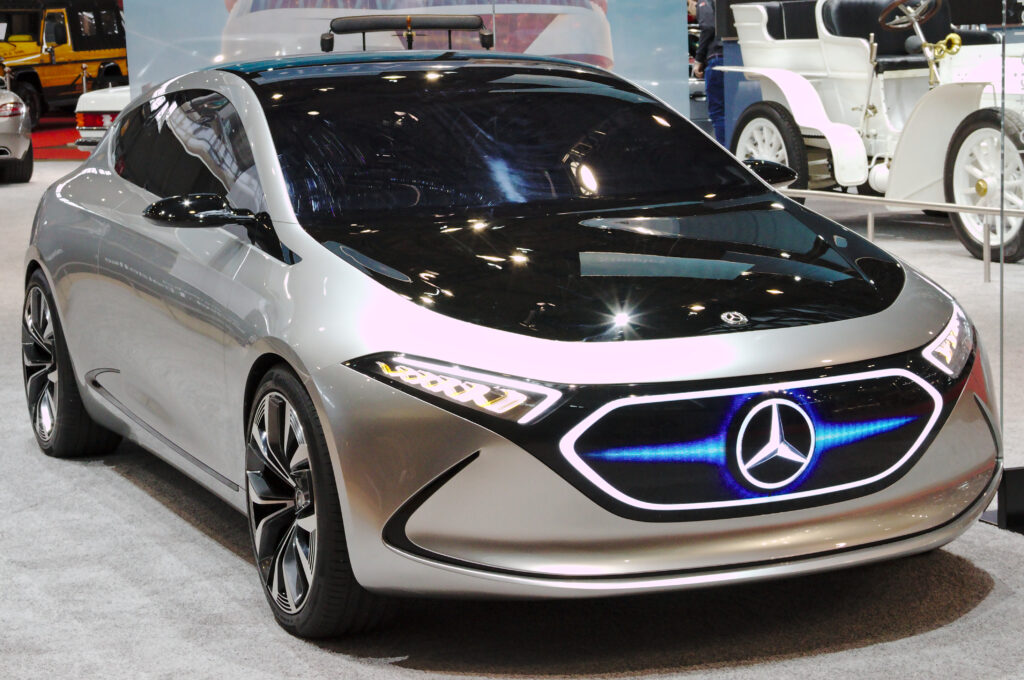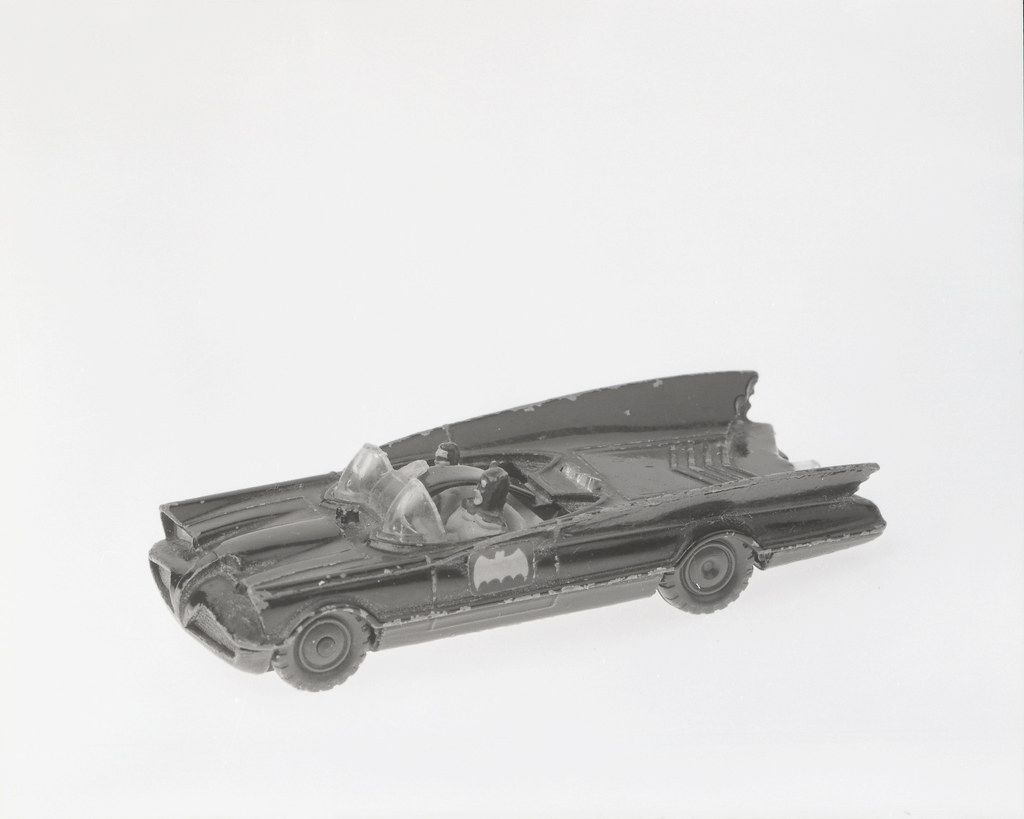
In today’s world, where gas prices can reach as high as $4.70 in some parts of the country, every drop of fuel counts. Whether you’re navigating the daily commute or planning an adventurous road trip, optimizing your car’s fuel efficiency isn’t just a smart move for your wallet; it’s a game-changer for your overall driving experience. The good news is, you don’t need to be a mechanic to make a significant difference. Simple, actionable changes to your driving habits and a bit of proactive vehicle care can lead to impressive savings.
Improving your everyday driving habits and keeping up with routine car maintenance are the two main ways to keep consumption (and driving expenses) down. This guide is packed with expert-backed tips designed to help you understand the factors influencing your miles per gallon (MPG) and implement practical strategies both on and off the road. We’re talking about tangible improvements that can increase your gas mileage by a noticeable margin, potentially saving you hundreds of dollars annually.
From smart planning before you even start your engine to making subtle adjustments behind the wheel, we’ve compiled a comprehensive collection of our favorite tips, plus insights from six other experts, all aimed at helping you get better gas mileage. Let’s dive into the first seven strategies that focus on immediate changes you can make to your driving style and vehicle preparation, setting you on the path to becoming a true fuel-efficiency master.
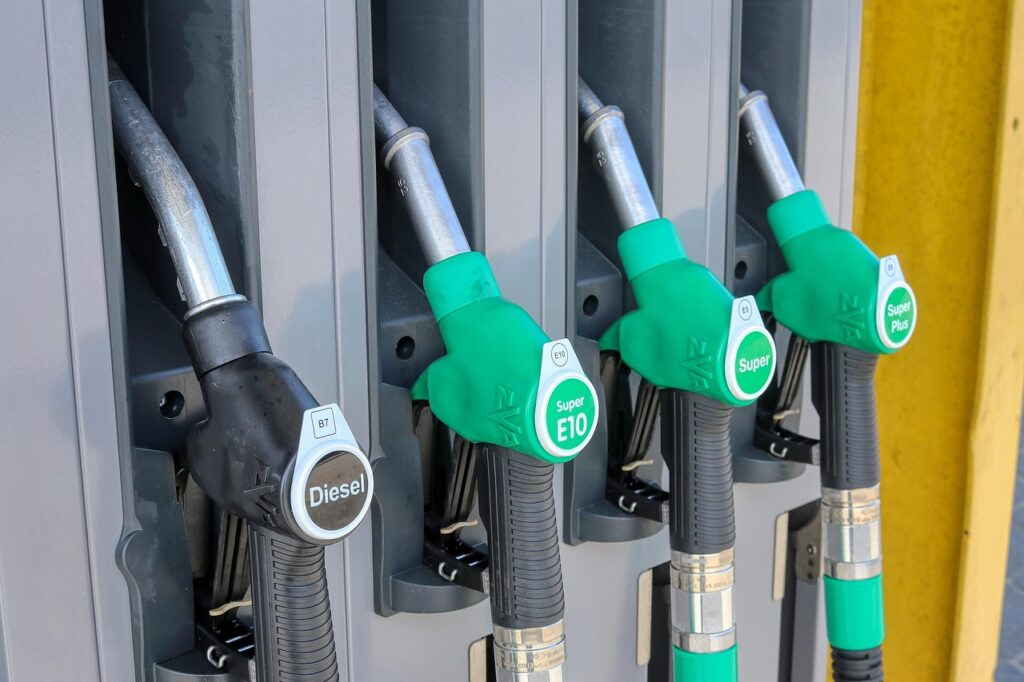
1. **Plan Your Trips & Routes Strategically**One of the easiest ways to start saving gas is before you even put the key in the ignition: by planning your trips. Utilizing navigation apps like Google Maps isn’t just for finding the fastest route; it’s also about identifying the most fuel-efficient paths, helping you to “minimize unnecessary turnarounds and backtracking.” This foresight helps prevent wasted mileage and ensures your journey is as direct as possible, conserving fuel right from the start of your drive.
Beyond just mapping out a route, think about consolidating your errands. The concept of “one-stop shops” where you can accomplish multiple tasks, such as banking and grocery shopping, in a single location can significantly reduce the number of separate trips you need to make. Combining errands into one efficient outing means fewer cold starts for your engine and less driving overall, leading directly to lower fuel consumption throughout your week.
Timing your travel to avoid peak traffic times is another golden rule for maximizing efficiency. Heavy traffic often means more idling and constant changes in speed, both of which are detrimental to your fuel economy. As the context explains, “when you are stuck in traffic, the engine has to work overtime, which uses more gas.” For manual transmission drivers, this stop-and-go scenario also creates “extra wear on your gearbox and clutch.” Robert emphasizes that “if you can avoid stop-go traffic routes whenever possible, you can consistently build up and improve your car’s overall gas mileage.” By proactively planning around congestion, you maintain momentum, reduce engine strain, and keep your MPG steady.
Read more about: Unlock Your Dream Vacation for Under $1000: 14 AI Hacks to Plan Your Next Escape Effortlessly
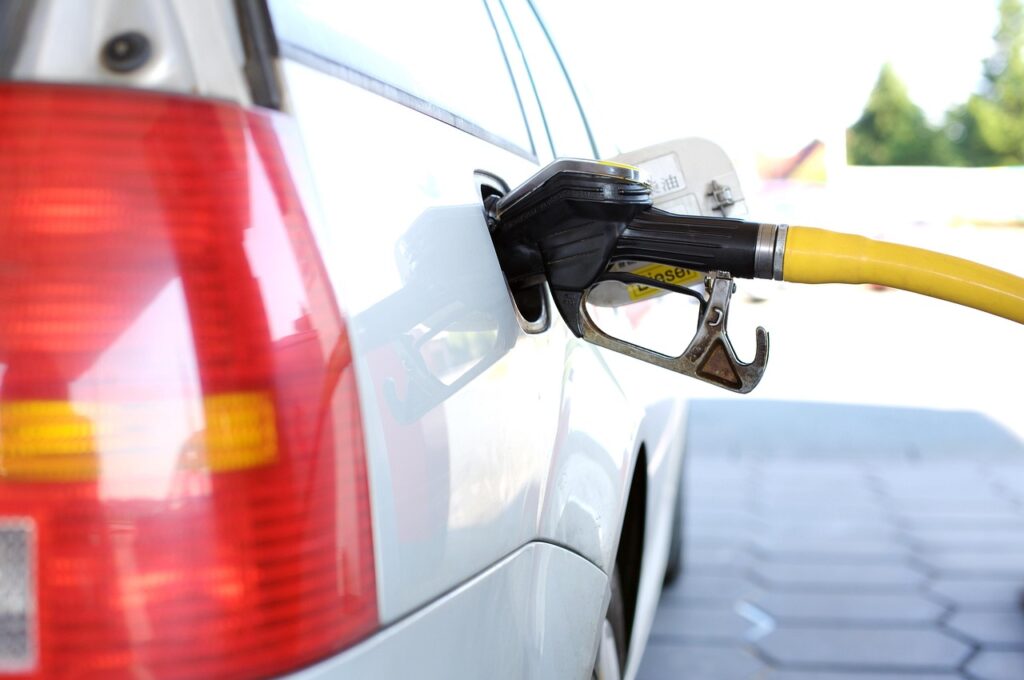
2. **Drive Smoothly and Conservatively**Aggressive driving habits like “quick acceleration and hard stops” are notorious for significantly lowering your gas mileage. The engine has to work much harder to rapidly accelerate or decelerate, consuming more fuel in the process. Driving at a “consistent speed on the highway saves gas and avoids unnecessary braking or acceleration.” This smooth approach minimizes stress on your engine and transmission, leading to more efficient fuel use over time.
Speed is another critical factor. “Fuel economy peaks at around 50 mph on most cars, then drops off as speeds increase.” This is largely due to “wind resistance [that] increases as you speed up,” forcing your engine to exert more effort to maintain higher velocities. Adhering to the recommended speed limit can yield substantial benefits, with an increase in “fuel economy between 7 and 14 percent.” So, while it might feel faster, pushing your speed past the optimal range is directly eating into your fuel tank.
The experts concur on the cost-effectiveness of a lighter foot. Chris “Moose” Pyle, an automotive expert, vividly illustrates the savings: “Driving 100 miles at 70 mph takes 1 hour and 25 minutes. Doing that same stretch at 65 mph takes just seven minutes longer. If your car gets 20 mpg at 70 and 25 at 60, and gas is $5 a gallon, that means you saved $5 during those extra seven minutes. ‘That comes out to be like $42 an hour, so driving slower is a good-paying job,’ says Pyle.” This clearly demonstrates the financial incentive behind conservative driving. Brandon Hartman, founder of RV Heating Warehouse, adds that “jerky or aggressive driving, with sudden acceleration and hard braking, makes the engine work harder and is a sure way to lower your gas mileage.” He further advises to “refrain from putting the pedal to the metal since hard acceleration will cost you another 20 percent in gas mileage.” Maintaining a safe distance from other cars also aids in avoiding sudden stops, allowing for smoother, more gradual braking and acceleration.
For consistent speeds on flat stretches, cruise control can be a fantastic tool to maintain efficiency. However, Pyle warns against its use in hilly terrain: “The car does not know if you are going uphill— it only knows you want to do X speed, so it will apply more and more throttle to maintain that speed.” Instead, manually controlling the throttle and allowing a slight drop in speed on inclines “will result in saving a few ounces of fuel per hill.” Additionally, practicing “predictive driving” by observing traffic ahead and anticipating changes, as Frank Bisciotti of RealTruck explains, helps “maintain momentum and avoid unnecessary stop-and-go.” This mindful approach to driving not only improves your MPG but also contributes to smoother traffic flow for everyone on the road.
Read more about: The Enduring Legacy: Ranking 10 Family Vans Built to Serve Multiple Generations of Owners
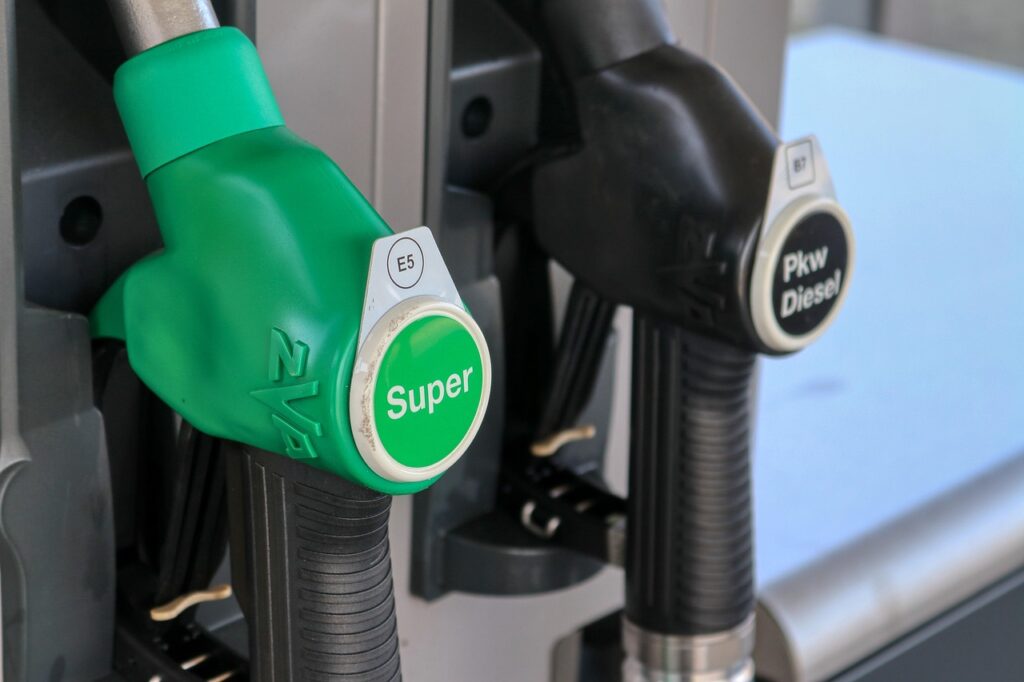
3. **Optimize Gear Shifting (Manual Transmission)**For those who drive a manual transmission, mastering efficient gear shifting is a highly effective way to conserve fuel. The core principle is to “upshift it as soon as it’s practical.” This means moving into a higher gear at lower RPMs, preventing the engine from over-revving and consuming excess fuel. Higher gears typically mean lower engine revolutions per minute, which directly translates to better fuel economy, especially at cruising speeds.
Ralph Robert, an expert writer for the Way.com app, emphasizes the importance of listening to your car or watching the RPM meter. He notes, “You are over-revving your engine if your car redlines on the RPM meter or the engine strains to move forward.” Shifting gears at the optimal RPMs ensures the engine is not overloaded and is working within its most efficient range. This not only saves gas but also reduces strain and wear on your engine, extending its lifespan.
When it comes to stopping, an efficient technique involves putting the car in neutral and relying on your brakes. This practice helps to “reduce strain on your engine and maximize fuel usage” by disengaging the engine from the drivetrain, allowing it to idle at its lowest possible RPMs while you slow down. Furthermore, Robert advises utilizing your “uppermost gear for better fuel efficiency” while on the highway. He explains, “When you are driving in a higher gear, your engine revs will be the lowest per minute and thereby eliminate massive gas consumption.” These specific manual transmission techniques empower drivers to take direct control over their fuel consumption.

4. **Minimize Idling**Idling, the act of letting your engine run while the vehicle is stationary, is a surprisingly significant drain on your fuel tank. Many drivers mistakenly believe it’s better to keep the engine running than to turn it off and restart, especially for short stops. However, the data clearly shows otherwise. “When idling, car engines use up to one-half gallons of fuel per hour,” which adds up quickly during daily commutes or while waiting.
Modern vehicles are designed to be highly efficient at starting up. In fact, “warm engines take about 10 seconds worth of fuel to restart.” This means that for any stop longer than a minute, turning off your engine actually conserves more fuel than letting it idle. Frank Bisciotti states, “Modern vehicles are efficient at starting up, so turn off the engine while you’re stationary to save gas.” This is a simple, actionable step that can make a tangible difference in your daily fuel consumption.
While remote start features are convenient for warming up a car on a cold morning, Bisciotti cautions against their overuse, as they too “waste fuel.” Many newer cars come equipped with start-stop technology, which automatically shuts down the engine when the vehicle is idling. This feature is specifically engineered to reduce wasted fuel and decrease emissions. As Robert plainly puts it, “Idling is not serving any purpose other than creating more pollution. In fact, idling your car uses more fuel than it takes to turn off and restart your car.” By minimizing idling, you’re not only saving money but also reducing your environmental footprint.
Read more about: Unlock Warp Speed: 14 Simple Steps to Supercharge Your Internet Connection Today

5. **Manage Car Cooling & Heating Efficiently**When temperatures soar, the urge to crank up the air conditioning or roll down all the windows is strong. However, both actions can impact your fuel economy. “Turning on the air conditioning or rolling down the windows can reduce fuel economy when it’s hot.” Understanding when and how to use these features efficiently can help you stay comfortable without excessively draining your gas tank.
One proactive measure is to park your car in the shade whenever possible. This simple act can prevent your vehicle’s interior from becoming an oven, reducing the initial need for intense cooling. If your car has been sitting in the sun, you can quickly air out the hot air before driving. The context suggests, “To quickly air out your car, open the passenger side window and rapidly open and close the car door on the opposite side.” This technique effectively pushes stale, hot air out of the cabin, making it easier for your car’s ventilation system to bring the temperature down to a comfortable level more quickly.
When driving on side streets at lower speeds, rolling down your windows or opening your sunroof can be an efficient way to cool the car, as “wind resistance” is minimized. However, the situation changes dramatically on the freeway. Kevin Oliff, general manager at AutoNation BMW Buena Park, advises, “Roll up those windows when you hit the open road. When driving fast, opening your windows creates drag, reducing your car’s engine efficiency.” While using the AC does draw power from the engine, Robert points out that the drag from open windows at highway speeds often has a greater negative impact on fuel economy. The best approach is to limit air conditioning use on the freeway and use it sparingly overall, turning off heating and AC when they are not strictly necessary.
Read more about: Is Your Phone Battery Dying Too Fast? Uncover the 15 Sneaky Culprits and Master the Fixes!
6. **Drive to Warm the Engine**In colder temperatures, many drivers have a habit of letting their car idle for several minutes to warm up the engine before driving. While the intention is good, this practice is actually counterproductive for fuel efficiency. The most effective way to bring your engine to its optimal operating temperature is by driving it normally, rather than letting it sit and idle.
The context explicitly states, “In cold temperatures, start the engine and then drive the car normally to warm the engine rather than letting it idle.” This method allows the engine to reach its operating temperature more rapidly and efficiently. When an engine idles, it warms up very slowly, burning fuel without any actual mileage gained. Driving, even gently, puts the engine under a load that helps it reach its ideal temperature range faster, thus “saves gas” by minimizing the period of inefficient operation.
It’s a simple shift in habit that can yield noticeable savings, especially if you live in an area with prolonged cold seasons. Instead of letting your car run in the driveway, simply start it, give it a few seconds for the oil to circulate, and then begin your drive. This immediate but gentle operation helps your car perform better and more efficiently from the outset, contributing to overall better MPG.
Read more about: The Worst of the Worst: From Failed Future Forecasts to Tricky Grammar Traps
7. **Reduce Vehicle Weight and Aerodynamic Drag**Every extra pound your car carries, and every bit of resistance it encounters, demands more fuel. This principle is especially true for smaller vehicles, where additional weight has a more pronounced effect on performance and fuel economy. “The heavier your car, the more fuel it needs to operate.” This means that regularly decluttering your car isn’t just about tidiness; it’s a direct route to better gas mileage.
Consider all the items you might habitually carry in your trunk or back seats. That gym bag you forgot to take out, the box of old textbooks, or even seasonal gear that isn’t currently in use—they all add up. “Removing 100 extra pounds from your car can increase fuel economy by 1 percent.” Brandon Hartman advises, “Be diligent about not leaving items on the car’s roof or trunk,” as “heavy cargo increases the amount of power your car needs to move.” If you frequently haul heavy loads, Robert suggests investing in “a car with adequate boot space and towing capacity” to handle the weight without severely impacting gas mileage.
Beyond internal weight, external accessories play a significant role in aerodynamic drag. Roof racks, bike racks, and cargo pods, while useful, create considerable wind resistance. When not in use, these items should be removed. “When you’re not using them, remove the cargo pod, bike rack and even the roof rack. This will significantly improve your vehicle’s aerodynamics and reduce its weight.” Frank Bisciotti adds that “swapping a heavy, fixed rack for a sleek, retractable tonneau can reduce drag and save fuel.” Even opting for “lighter accessories, like bed and floor liners,” when possible, contributes to this effort.
The often-overlooked plastic “air dam (aka spoiler)” at the front of your car is crucial for aerodynamics. If it’s broken or missing, it can reduce your gas mileage. This component “literally dams off airflow to the undercarriage of your car, forcing the air up and over the hood. That helps your car cut through the air with less drag.” It also helps with airflow to the A/C condenser and radiator, reducing the load on your electrical system. Ensuring this part is intact, and even considering aftermarket spoilers for roof racks, can help your car slice through the air more efficiently, turning aerodynamic improvements into fuel savings.” , “_words_section1”: “1945
Read more about: Navigating the Red Zone: A Deep Dive into States with the Toughest Traffic Fines and Penalties

8. **Maintain Proper Tire Pressure and Alignment**Your tires are the unsung heroes of fuel efficiency, directly impacting how hard your engine works to move your car. It’s a fundamental truth that “maintaining proper tire pressure reduces your tire’s friction with the road.” When there’s less friction, less energy is needed to propel your vehicle forward, resulting in less gas consumption. This simple act of keeping your tires correctly inflated can, on average, “improve gas mileage by .6 percent.”
However, a surprising number of vehicles on the road, more than a quarter of passenger cars, roll with at least one underinflated tire. This seemingly minor oversight increases rolling resistance, forcing your engine to exert more effort. John Vorisek, founder at Repair Surge, points out that while underinflation might offer a “softer feeling ride,” it severely compromises safety by reducing handling and increasing the risk of blowouts. To avoid these issues and ensure optimal fuel economy, always fill your tires to the recommended pressure found on the decal inside the driver’s door.
Beyond just pressure, tire alignment is another critical factor often overlooked. The context emphasizes checking “tire alignment at least once a year or every 12,000-15,000 miles.” Proper alignment prevents uneven wear and tear, reduces veering and vibrating, and, crucially, significantly improves fuel efficiency. As Vorisek highlights, “incorrect wheel alignment can reduce gas mileage and it’s also a safety hazard.” Even a slight misalignment, like tires bowed out by just 0.017 inches, is akin to dragging your tire sideways for 102 miles over every 20,000 miles driven.
To check your alignment without a shop visit, Vorisek suggests using a tread depth gauge to measure both edges of each tire. If one side shows more wear than the other, it’s a clear sign your car needs alignment. Furthermore, tire selection plays a role too. “Bigger tires and knobby tires have more rolling resistance,” which translates to higher costs at the pump. Opting for “low rolling resistance” tires and removing winter tires once the cold season is over can further boost your MPG, making every rotation count towards better efficiency and safety.
Read more about: The 14 Essential Questions to Ask Before Buying a Car: Your Comprehensive Guide to Safety and Value
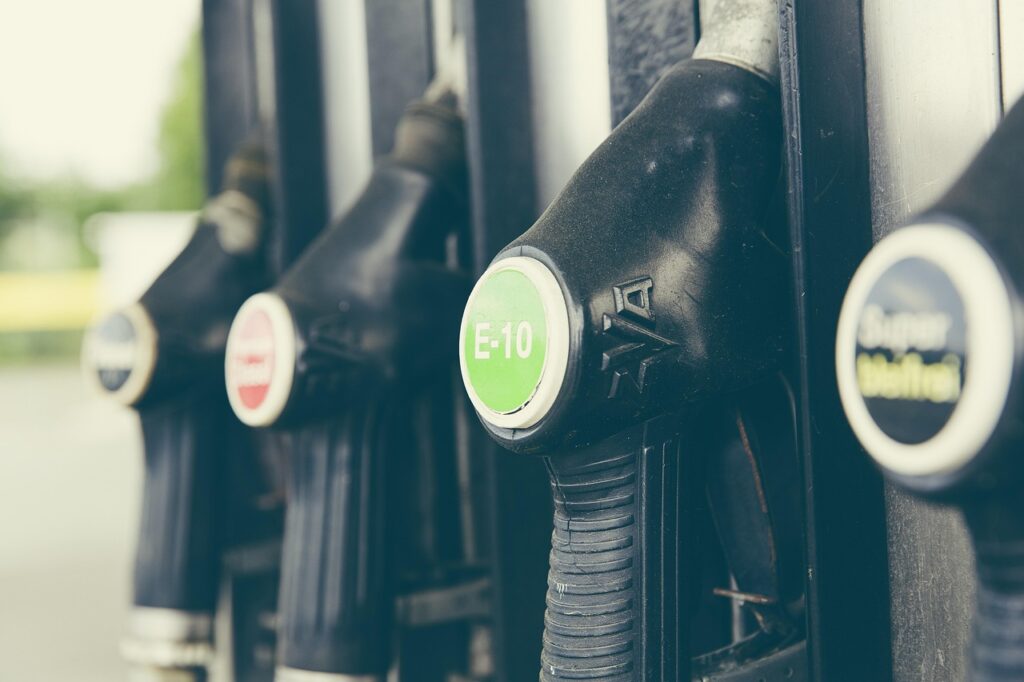
9. **Choose the Right Oil and Keep Filters Clean**Just as a body needs clean air and proper hydration to function, your car’s engine demands clean air filters and the correct type of oil to run at peak efficiency. The engine is a complex system of moving parts, and its ability to operate smoothly and coolly is directly tied to the quality and cleanliness of its oil. “Routinely changing your oil helps your car’s engine run efficiently by lubricating parts, cooling the engine and preventing buildup.” When oil becomes old or low, the engine has to work harder, consuming more fuel in the process.
It’s not just about changing the oil, but using the *right* oil. The context stresses, “Whether you use conventional or synthetic oil, it’s best to use the oil recommended by the manufacturer to avoid damage or violating your car’s warranty.” Adhering to these recommendations ensures your engine receives the precise lubrication it needs to minimize friction and maximize fuel efficiency, as fresh oil reduces friction and helps the engine run smoothly. Regular oil checks, ideally once a month, coupled with changes every 3,000 to 5,000 miles, are crucial for long-term engine health and MPG.
Equally vital are your car’s air filters. Your engine “sucks in 14 million gallons of air through the air filter every year.” A dirty air filter restricts this crucial airflow, forcing the engine to work harder to clean its interior air and, consequently, burn more fuel. On older vehicles (pre-1999), a clogged filter could increase fuel usage by “almost 10 percent.” While newer vehicles might compensate by cutting back on fuel, this leads to a noticeable lack of power and pick-up.
Regular inspection and replacement of your air filter are simple yet impactful maintenance tasks. “For most cars, you’ll need to replace your air filter at least once a year or every 12,000-15,000 miles.” If you live in dusty or dirty environments like a desert or beach, more frequent replacement may be necessary. A clean air filter ensures optimal airflow, which is essential for efficient combustion and overall engine performance, directly contributing to better fuel economy.
Read more about: 15 Home Depot Buys Contractors & Experts Say to Skip for Better Quality & Long-Term Savings

10. **Replace Spark Plugs and Monitor Oxygen Sensors**Often overlooked until a problem arises, spark plugs and oxygen sensors are vital components for your engine’s fuel efficiency, working behind the scenes to ensure proper combustion and emissions. Spark plugs are literally the ignition source, igniting the air-fuel mixture in your engine’s cylinders. When they’re worn out, they can lead to “engine misfire, slow acceleration times and fuel inefficiencies” because the engine struggles to operate effectively.
Inspecting your spark plugs at least once a year and following the manufacturer’s replacement recommendations is a non-negotiable step for optimal MPG. Vorisek specifically recommends inspecting and replacing spark plugs and other ignition components regularly, highlighting their criticality for efficient fuel combustion. He further suggests replacing spark plugs even earlier than the 100,000-mile mark often advertised, noting that an 80% worn plug at 80,000 miles will already lead to more misfires and incomplete combustion. Even if this means replacing them an “extra time over the life of your car,” the fuel savings will make it worthwhile.
Then there are oxygen sensors, which play a crucial role in regulating your engine’s fuel mixture by “monitor[ing] the efficiency of combustion.” These sensors track the amount of oxygen in the exhaust, sending data to the engine’s computer. Over time, oxygen sensors degrade, and a failing sensor “can cost you up to 15 percent in gas mileage.” Waiting for the “service engine soon” light to come on, which signals a complete failure, will incur diagnostic fees and means you’ve already been losing significant fuel efficiency for a while.
For vehicles made in 1996 and newer, replacing these sensors every 100,000 miles is recommended to maintain peak mileage. For older pre-1996 models, replacement should occur every 60,000 miles. While some cars have multiple sensors, those “behind the catalytic converter rarely fail.” Being proactive about spark plug and oxygen sensor replacement ensures your engine’s combustion process is as efficient as possible, preventing unnecessary fuel waste and costly repairs down the line.
Read more about: Decode Your Car’s Emissions Test Failure: The 11 Most Common Reasons and How to Fix Them
11. **Address Warning Lights and Diagnostic Issues Promptly**Your car’s dashboard isn’t just a collection of pretty lights; it’s a sophisticated communication system, and ignoring its warnings can directly hit your fuel economy and lead to more severe issues. The overarching theme is clear: “issues that force your car to work harder can lead to increased fuel consumption.” When a warning light illuminates, it’s your car telling you something needs attention, and acting quickly can save you both gas and repair bills.
The “check engine light” is a prime example. Many drivers mistakenly believe it only signals an “emissions problem.” However, as the context reveals, “emissions problems are almost always caused by an incomplete burn,” which translates directly to wasted fuel and reduced efficiency. Worse, this unburnt fuel can severely damage your expensive catalytic converter, which “can cost upwards of $1,000” to replace, on top of fixing the initial problem.
Beyond the check engine light, other indicators like a failing thermostat, brake drag, or a faulty cabin air filter can silently sabotage your MPG. A thermostat that “opens too quickly or stays open can dramatically lower the coolant temperature,” leading to wasted gas. Brake calipers that are “rusting, binding and dragging” create constant resistance, making your engine work harder. Even a clogged cabin air filter, while not directly engine-related, can damage your blower motor and force your AC to “run longer and harder,” indirectly affecting fuel use.
Familiarize yourself with all your dashboard lights, from tire pressure to transmission temperature. Investing in an inexpensive non-contact infrared laser thermometer can help you diagnose issues like a failing thermostat or brake drag before they escalate. Robert stresses that “keeping tabs on the maintenance of your car is very similar to how you go for medical checks occasionally,” allowing you to “identify an issue before it becomes worse and starts to affect your vehicle’s performance.” Promptly addressing these diagnostic signals is a cornerstone of maintaining optimal fuel efficiency and extending your vehicle’s lifespan.
Read more about: 15 Simple Warning Signs: How to Spot a Failing Transmission Before It Leaves You Stranded

12. **Ensure Regular Comprehensive Tune-ups**While individual components are important, the cumulative effect of proper, regular tune-ups cannot be overstated for long-term fuel efficiency and overall vehicle health. “Proactive car maintenance can help you avoid common causes of gas mileage issues.” A comprehensive tune-up involves mechanics checking critical components to ensure everything is working in harmony, from the engine’s combustion system to the cooling and transmission systems.
Robert emphasizes, “No matter how well you drive or what tips you follow, your car will never keep good mileage if you don’t maintain it.” This holistic approach to vehicle care is essential because an engine that “has to work harder due to a lack of lubrication or air intake won’t give you optimal gas mileage,” as Vorisek points out. Regular tune-ups allow professionals to catch minor issues before they become major problems, preserving both your fuel economy and preventing costly breakdowns.
Consider the often-overlooked aspects of maintenance that contribute significantly to efficiency. Transmission fluid, for instance, needs regular checks and replacements every 30,000 to 60,000 miles to ensure smooth gear shifts and efficient power transfer. The cooling system, which keeps the engine at its optimal operating temperature, requires regular coolant level checks and replacements every 30,000 miles. Even battery maintenance is crucial, as a weak battery puts extra strain on the alternator, drawing more power from the engine.
These seemingly small details, when neglected, combine to degrade your car’s performance and increase fuel consumption. A strong battery, clean fuel system, and well-lubricated transmission all play a role in allowing your engine to work with less effort. By consistently investing in regular tune-ups, you’re not just fixing problems; you’re proactively optimizing your vehicle’s entire system to deliver the best possible MPG and peak performance throughout its life.
Read more about: The True Financial Landscape: Hidden Costs and Key Considerations When Moving to Texas
13. **Understand Fuel Grades and Avoid Unnecessary Additives**When standing at the gas pump, the choice between different fuel grades can sometimes be confusing, and the allure of “miracle” fuel additives can be tempting. However, making informed decisions here is crucial for both your wallet and your car’s health. The golden rule for fuel grade is simple: “go with the octane recommended by your car’s manufacturer.” This recommendation is tailored to your engine’s specific design and compression ratio, ensuring optimal performance and efficiency.
As Frank Bisciotti of RealTruck wisely advises, “Using premium fuel in an engine that doesn’t need it doesn’t boost performance or mileage, just your expenses.” Your car is engineered to run most efficiently on the octane level specified by its manufacturer. Deviating from this, either by using a lower grade than required or an unnecessarily higher premium, offers no real benefit to your MPG and simply increases your costs. Sticking to the recommended grade ensures “optimal efficiency and cost savings.”
Then there’s the vast and often misleading market of fuel additives. There are “a lot of online gimmicks and additives that claim to boost your fuel efficiency,” but the truth is often less glamorous. Chris Pyle, an automotive expert, cautions against believing all the hype. He points out, “If most of these were legit, the manufacturer would have already put the device on your car or recommended the additive with every fuel tank.” The reality is, most of these products offer “less than 3% gains” and carry significant risks.
Pyle warns that these additives “can potentially damage your engine or emissions system over time, causing repair bills that could be $1000 plus.” Rather than chasing marginal, unproven gains with risky additives, your money is far better spent on consistent, manufacturer-recommended maintenance. Trust in your car’s design and the proven methods of care; they are your best bet for maximizing fuel efficiency and avoiding unnecessary expenses and damage.
Read more about: 12 Car Maintenance Myths That Are Costing You Money: A Consumer Reports Deep Dive
By integrating these comprehensive strategies into your driving habits and maintenance routine, you’re not just saving a few dollars at the pump; you’re actively optimizing your vehicle for peak performance, longevity, and a reduced environmental footprint. From the immediate impact of smooth driving and smart trip planning to the long-term benefits of meticulous maintenance, every conscious choice contributes to a more efficient and economical journey. Embrace these insights, and watch your MPG—and your savings—soar, transforming every drive into a testament to smart, sustainable car ownership.

